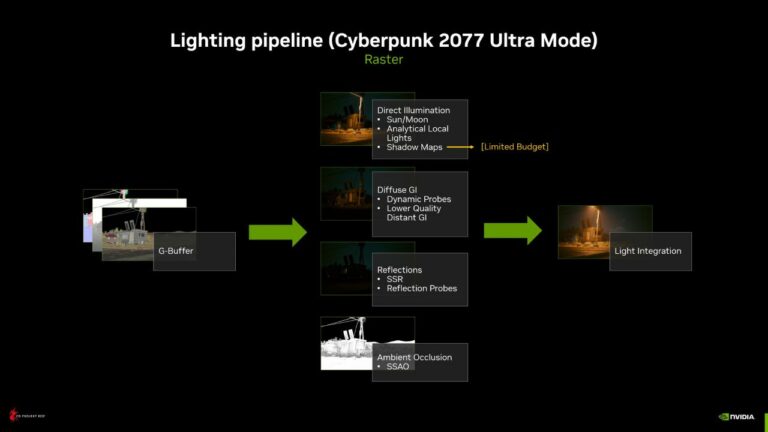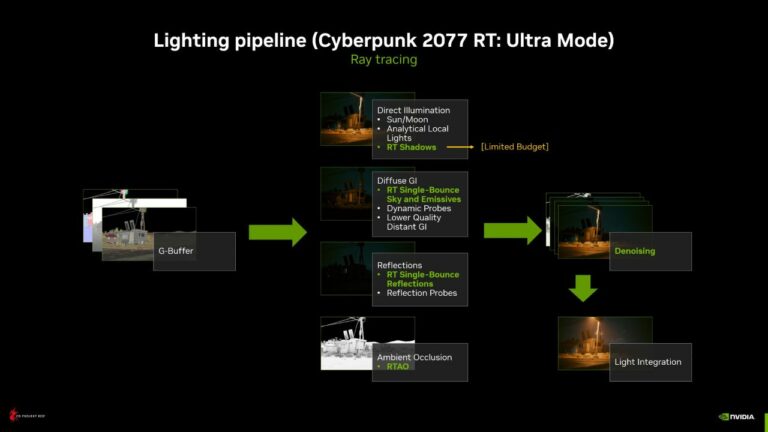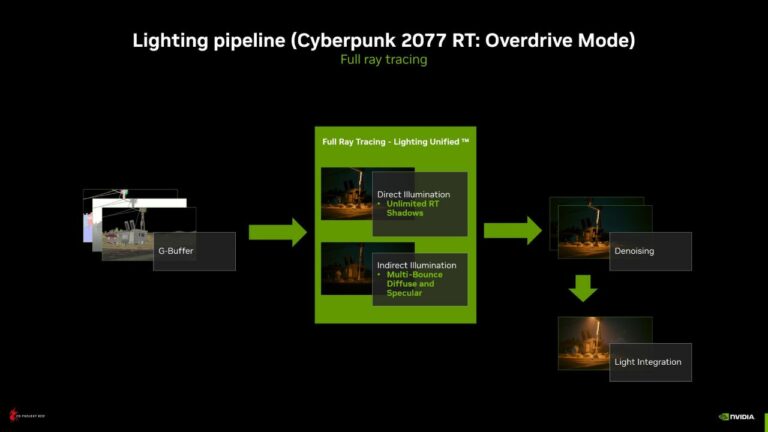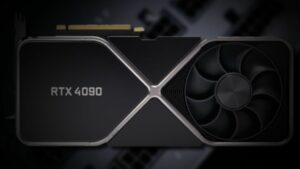A new video released by Nvidia shows how the RT Overdrive works in-game in Cyberpunk 2077 on an RTX 4090 system. They also provided an in-depth breakdown of what’s happening behind the beautifully rendered scenes.
In the video, it was observed that there’s a severe price to pay for running an AAA title like Cyberpunk 2077 with an all-out overdrive ray tracing system in place.
On the RTX 4090 at 4K resolution and native rendering, the FPS can go as low as 16 in some scenarios. No matter which scene it is, without DLSS, it doesn’t go beyond the 34 FPS mark.
However, Nvidia’s state-of-the-earth DLSS 3 upscaling technology boosts the FPS to about 130 FPS, sometimes as high as 138 FPS. This comes at the expense of visual quality, as DLSS always renders the frame at a lower resolution.
The new graphics Overdrive mode replaces the current system of ray-tracing pipeline with a fully unified path-tracing solution. This expands the visual horizon of the game.

On average, there are about 635 ray calculations per pixel for this new path-tracing technology when compared to just 39 rays per pixel on Battlefield V, one of the original ray-tracing launches.
The regular ray tracing modes in Cyberpunk 2077 use a hybrid rendering solution consisting of rasterization, ray-traced reflections, global illumination, and other effects.

The new path tracing simulates every light source to generate a realistic set of lighting, shadows, and reflections. This causes significant taxing of the GPU and thereby reduces the frame rate drastically.
With RT Overdrive, all the light sources are path traced, used in unison with Nvidia Real-Time-Denoisers, Nvidia RTX-DI, and Shader Execution Reordering to improve image quality and performance.

The usage of the GPU cores for such heavy rendering slows even an RTX 4090 down in the process, allowing it to hit only 16 FPS on native resolution. This goes on to show how demanding simulating real light is in 3D as compared to giving fake, glossy lighting.
With the new lighting claimed to be “physically correct” by Nvidia, players will have to wait for about a week until April 11th, when this update comes to all who have purchased the game.
It is then that we will get a true taste of real-time light rendering and see how much the upscaling boosts the FPS for different GPUs.
About Cyberpunk 2077
Cyberpunk 2077 is a 2020 action role-playing video game developed by CD Projekt Red and published by CD Projekt, based on video game designer Mike Pondsmith’s game series.
Set in a dystopian cyberpunk universe, the player assumes the role of “V,” a mercenary in the fictional Californian city known as “Night City,” where they deal with the fallout from a heist gone wrong that results in an experimental cybernetic “bio-chip” containing an engram of the legendary rock star and terrorist Johnny Silverhand (played by Keanu Reeves) threatening to slowly overwrite V’s mind; as the story progresses V and Johnny must work together to find a way to be separated and save V’s life.
About Nvidia
NVIDIA Corporation is an American multinational technology company incorporated in Delaware, based in Santa Clara, California. They design graphics processing units (GPUs) for the gaming and professional markets, as well as system on chip units (SoCs) for the mobile computing and automotive market.
Best known for the “GeForce” lines of GPUs, they are a direct competitor to AMD’s “Radeon” series. NVIDIA has also expanded its offerings with its handheld game consoles Shield Portable, Shield Tablet, and Shield Android TV and its cloud gaming service GeForce Now.









No Comments on Cyberpunk RT Overdrive mode drops to 16 FPS on RTX 4090